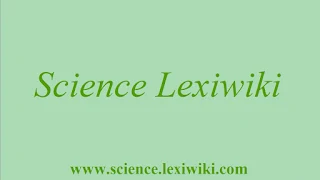Questions on Blood and Blood Vessels
Multiple-Choice Questions: Blood and Blood Vessels
1. What is the primary function of red blood cells?
A) Fight infections
B) Transport oxygen
C) Regulate hormones
D) Form clots
E) Absorb nutrients
2. Which component of blood is responsible for clotting?
A) Red blood cells
B) Plasma
C) Platelets
D) White blood cells
E) Hemoglobin
3. What is the most abundant component of plasma?
A) Proteins
B) Glucose
C) Water
D) Salts
E) Fats
4. Which blood cells are part of the immune system?
A) Red blood cells
B) Platelets
C) Plasma cells
D) White blood cells
E) Neurons
5. The protein in red blood cells that binds to oxygen is:
A) Hemoglobin
B) Myosin
C) Actin
D) Insulin
E) Keratin
6. Which blood vessel carries blood away from the heart?
A) Vein
B) Artery
C) Capillary
D) Venule
E) Lymph vessel
7. Which blood vessel has valves to prevent backflow?
A) Arteries
B) Capillaries
C) Veins
D) Arterioles
E) Aorta
8. The smallest blood vessels where exchange of substances occurs are:
A) Veins
B) Arteries
C) Capillaries
D) Arterioles
E) Venules
9. Which blood vessel type experiences the highest blood pressure?
A) Veins
B) Capillaries
C) Arteries
D) Venules
E) Lymphatics
10. Which of the following is a function of blood plasma?
A) Carry oxygen
B) Initiate clotting
C) Transport nutrients and hormones
D) Destroy pathogens
E) Pump blood
11. Which blood group is known as the universal donor?
A) AB+
B) AB–
C) O+
D) O–
E) A+
12. Which of these is not a formed element of blood?
A) Erythrocytes
B) Leukocytes
C) Thrombocytes
D) Plasma
E) All are formed elements
13. Which blood vessel connects arteries and veins?
A) Arterioles
B) Venules
C) Capillaries
D) Lymphatics
E) Carotid arteries
14. Which blood vessel carries oxygenated blood from the lungs to the heart?
A) Pulmonary artery
B) Aorta
C) Pulmonary vein
D) Vena cava
E) Coronary vein
15. What is the lifespan of a red blood cell in humans?
A) 5 days
B) 20 days
C) 60 days
D) 120 days
E) 180 days
16. Which artery is the largest in the human body?
A) Carotid artery
B) Pulmonary artery
C) Femoral artery
D) Aorta
E) Brachial artery
17. Which of the following transports deoxygenated blood?
A) Pulmonary vein
B) Aorta
C) Superior vena cava
D) Left atrium
E) Coronary artery
18. Which plasma protein is most important for blood clotting?
A) Albumin
B) Globulin
C) Fibrinogen
D) Hemoglobin
E) Myoglobin
19. Blood is classified as what type of tissue?
A) Muscular
B) Connective
C) Epithelial
D) Nervous
E) Glandular
20. What causes the red color of blood?
A) Myoglobin
B) Chlorophyll
C) Hemoglobin
D) Plasma proteins
E) Carbon dioxide
- Questions About the Endocrine System: characteristics, glands, and diseases
- Questions on Hormone Regulation
- Questions on Circulatory System
Answers with Explanations
1. B – Red blood cells (erythrocytes) contain hemoglobin, which transports oxygen from the lungs to tissues.
2. C – Platelets (thrombocytes) are cell fragments that help form blood clots.
3. C – Plasma is about 90% water, serving as the medium for transport.
4. D – White blood cells (leukocytes) are part of the immune system and fight pathogens.
5. A – Hemoglobin is the protein that binds oxygen in red blood cells.
6. B – Arteries carry blood away from the heart.
7. C – Veins contain valves to prevent the backflow of blood.
8. C – Capillaries are tiny vessels where gas, nutrient, and waste exchange occurs.
9. C – Arteries have thick muscular walls to withstand high pressure from heart contractions.
10. C – Plasma transports nutrients, hormones, proteins, and waste products.
11. D – O negative blood lacks A, B, and Rh antigens, making it a universal donor.
12. D – Plasma is the liquid portion; the formed elements are RBCs, WBCs, and platelets.
13. C – Capillaries are the sites where arteries and veins connect and exchange materials.
14. C – The pulmonary vein carries oxygenated blood from the lungs to the heart.
15. D – Red blood cells live approximately 120 days before being recycled in the spleen.
16. D – The aorta is the body’s largest artery, distributing oxygenated blood from the heart.
17. C – The superior vena cava carries deoxygenated blood from the upper body to the heart.
18. C – Fibrinogen is a plasma protein converted into fibrin during clot formation.
19. B – Blood is considered a connective tissue because it connects body systems by transporting materials.
20. C – Hemoglobin contains iron and gives blood its red color when oxygenated.
Dive into the groundbreaking science of neurotransmitters—your brain’s invisible architects—in Chemical Harmony: How Neurotransmitters Shape Our Lives (2025). This meticulously researched book reveals how serotonin, dopamine, GABA, and other brain chemicals silently orchestrate every aspect of your existence, from decision-making and relationships to mental health and emotional resilience.Click here to buy
👉 +3000 Biology Questions with Answers Key.
Share Online!


